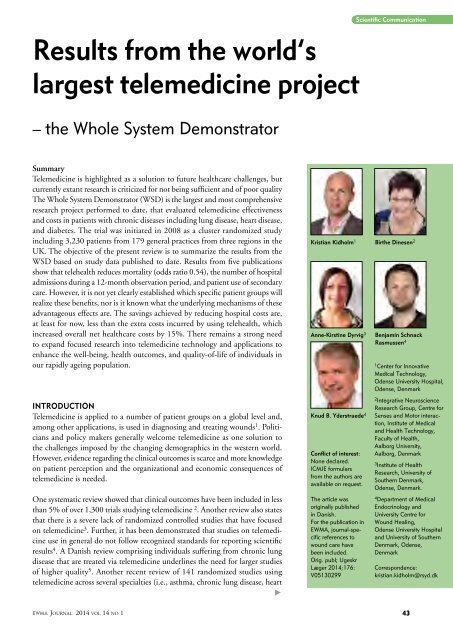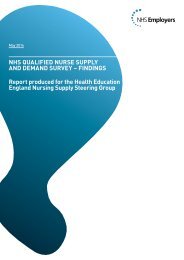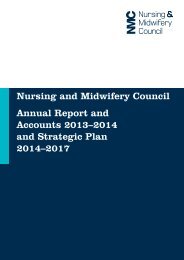Journal_1_2014_final_WEB
Journal_1_2014_final_WEB
Journal_1_2014_final_WEB
You also want an ePaper? Increase the reach of your titles
YUMPU automatically turns print PDFs into web optimized ePapers that Google loves.
Scientific Communication<br />
Results from the world’s<br />
largest telemedicine project<br />
– the Whole System Demonstrator<br />
Summary<br />
Telemedicine is highlighted as a solution to future healthcare challenges, but<br />
currently extant research is criticized for not being sufficient and of poor quality<br />
The Whole System Demonstrator (WSD) is the largest and most comprehensive<br />
research project performed to date, that evaluated telemedicine effectiveness<br />
and costs in patients with chronic diseases including lung disease, heart disease,<br />
and diabetes. The trial was initiated in 2008 as a cluster randomized study<br />
including 3,230 patients from 179 general practices from three regions in the<br />
UK. The objective of the present review is to summarize the results from the<br />
WSD based on study data published to date. Results from five publications<br />
show that telehealth reduces mortality (odds ratio 0.54), the number of hospital<br />
admissions during a 12-month observation period, and patient use of secondary<br />
care. However, it is not yet clearly established which specific patient groups will<br />
realize these benefits, nor is it known what the underlying mechanisms of these<br />
advantageous effects are. The savings achieved by reducing hospital costs are,<br />
at least for now, less than the extra costs incurred by using telehealth, which<br />
increased overall net healthcare costs by 15%. There remains a strong need<br />
to expand focused research into telemedicine technology and applications to<br />
enhance the well-being, health outcomes, and quality-of-life of individuals in<br />
our rapidly ageing population.<br />
INTRODUCTION<br />
Telemedicine is applied to a number of patient groups on a global level and,<br />
among other applications, is used in diagnosing and treating wounds 1 . Politicians<br />
and policy makers generally welcome telemedicine as one solution to<br />
the challenges imposed by the changing demographics in the western world.<br />
However, evidence regarding the clinical outcomes is scarce and more knowledge<br />
on patient perception and the organizational and economic consequences of<br />
telemedicine is needed.<br />
One systematic review showed that clinical outcomes have been included in less<br />
than 5% of over 1,300 trials studying telemedicine 2 . Another review also states<br />
that there is a severe lack of randomized controlled studies that have focused<br />
on telemedicine 3 . Further, it has been demonstrated that studies on telemedicine<br />
use in general do not follow recognized standards for reporting scientific<br />
results 4 . A Danish review comprising individuals suffering from chronic lung<br />
disease that are treated via telemedicine underlines the need for larger studies<br />
of higher quality 5 . Another recent review of 141 randomized studies using<br />
tele medicine across several specialties (i.e., asthma, chronic lung disease, heart<br />
<br />
Kristian Kidholm 1 Birthe Dinesen 2<br />
Anne-Kirstine Dyrvig 3 Benjamin Schnack<br />
Rasmussen 4<br />
Knud B. Yderstraede 4<br />
Conflict of interest:<br />
None declared.<br />
ICMJE formulars<br />
from the authors are<br />
available on request.<br />
The article was<br />
originally published<br />
in Danish.<br />
For the publication in<br />
EWMA, journal-specific<br />
references to<br />
wound care have<br />
been included.<br />
Orig. publ; Ugeskr<br />
Læger <strong>2014</strong>;176:<br />
V05130299<br />
1 Center for Innovative<br />
Medical Technology,<br />
Odense University Hospital,<br />
Odense, Denmark<br />
2 Integrative Neuroscience<br />
Research Group, Centre for<br />
Senses and Motor interaction,<br />
Institute of Medical<br />
and Health Technology,<br />
Faculty of Health,<br />
Aalborg University,<br />
Aalborg, Denmark<br />
3 Institute of Health<br />
Research, University of<br />
Southern Denmark,<br />
Odense, Denmark.<br />
4 Department of Medical<br />
Endocrinology and<br />
University Centre for<br />
Wound Healing,<br />
Odense University Hospital<br />
and University of Southern<br />
Denmark, Odense,<br />
Denmark<br />
Correspondence:<br />
kristian.kidholm@rsyd.dk<br />
EWMA <strong>Journal</strong> <strong>2014</strong> vol 14 no 1 43




